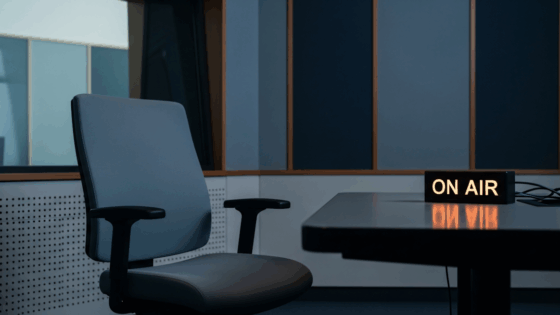on
BY SIMONE J. SMITH
Migration. Cultural Legacy. Influence. Perseverance.
In my line of work, I have an opportunity to experience the very best that Toronto has to offer, and on Thursday August 22nd, 2024, Toronto Caribbean Newspaper was invited to a special screening of Sounds & Pressure: Reggae in a Foreign Land, at Paradise Theatre.
It all started with two individuals who met at a record fair back in mid-2010. They instantly realized they shared a love for reggae music and its preservation. One of them was a Jamaican/Canadian, coming from a family who have long been involved as musicians in Jamaica. For him, it was important to showcase the musical contributions of Jamaicans, especially in a city and country that tends to easily forget the role of racialized communities. For the other individual, it soon became clear that he had a desire to learn more about reggae music, the artists, and their life stories. He soon found out that there were legends whose stories had not been documented
Graeme Mathieson is a Jamaican Canadian filmmaker based in Toronto. Made in collaboration with Chris Flanagan, their film about ska and reggae legend Stranger Cole, “RUFF & TUFF,” premiered at Hot Docs. Beyond directing, Graeme is recognized as DJ Gramera, a title earned through his 15-year tenure hosting StolenSouls on CHRY 105.5 FM. He is currently in production on “PLAY IT LOUD! How Toronto Got Soul,” a feature documentary on the career of singer Jay Douglas.
Chris Flanagan is a Toronto-based installation artist and documentary filmmaker who creates work about music, magic and obsessive subcultures. His feature, “Shella Record: A Reggae Mystery,” premiered at Hot Docs 2019, played at festivals around the world, and aired on Television Jamaica and CBC. In addition to exhibiting in galleries across continents, Chris is a DJ and runs Shella Records, a label dedicated to showcasing vintage reggae recordings in partnership with the original artists.
Now let’s get back to why I was at Paradise Theatre, and why I have introduced Chris and Graeme. Jamaican culture is synonymous with Toronto, from the vernacular to the food (the patty arguably being Toronto’s unofficial snack) to popular music, yet we rarely celebrate those who sparked this influence.
At the height of the golden age of reggae, some of Jamaica’s brightest stars left their homeland to relocate to Toronto. Now their stories and the musical community they helped build are celebrated in Graeme Mathieson and Chris Flanagan’s captivating National Film Board of Canada (NFB) anthology series Sounds & Pressure: Reggae in a Foreign Land, premiering August 23rd, on nfb.ca and the NFB’s streaming platform for smart TVs.
Through: rare archives, electrifying needle drops, and lively interviews, this five-part series takes viewers from Kingston to Kensington Market. I had a chance to see and hear how reggae made roots in Canada. The series chronicled the musical and geographical journeys of: Nana McLean, Johnny Osbourne, Leroy Sibbles, Jerry Brown and the duo of Roy Panton and Yvonne Harrison.
During the discussion after the premier, Chris and Graeme admit that narrowing the subjects to just five was a challenge, because there are so many important Jamaican icons who came to Canada. The six subjects that were selected are some of the most relevant to the foundation of Jamaican popular music and its roots in Toronto. They adroitly highlight different aspects of the music, including: a label owner and producer, female artists, ska and reggae singers.
All of the subjects were extremely dynamic, and they each represented something different while facing similar barriers and challenges to success. Though this is a celebratory series, it’s also an indictment of a music industry that refused to support the talent of Caribbean artists (a couple of the biggest ones returned to Jamaica) and a reminder not to repeat the same mistakes in the present day.
Getting their sound to catch on in Canada wasn’t easy. These innovators of rhythm and rhyme had to work against: racism, scarce resources, and an industry that stigmatized reggae music. That didn’t stop them from transforming the city into a reggae mecca. With a powerful message of love and a revolutionary spirit behind them, these visionaries faced the pressure head on—and thanks to them, you can still feel the infectious beats of Bathurst Street and Eglinton Avenue reverberating all over the world.
I want to take a moment to introduce some of these history makers:
Roy Panton and Yvonne Harrison made history as one of the first Jamaican ska duos. Decades after going their separate ways, the pair rekindle their magic—this time, 3,000 kilometers north, in Scarborough, Ontario.
Against the changing face of Toronto’s Little Jamaica, where she established some of the city’s landmark reggae record stores, singer Nana McLean challenges outdated stereotypes and establishes her reputation as the queen of reggae in Canada.
Before gaining international recognition as the “Dancehall Godfather,” legendary singer Johnny Osbourne was at the forefront of a revolution that transformed Toronto into one of the most vibrant reggae communities in the world.
In Trench Town—the birthplace of reggae—Leroy Sibbles rose to stardom as the lead singer of The Heptones and the undisputed king of the reggae bassline. Then, at the height of his career, he left it all behind to create a new legacy for himself in Toronto.
Jerry Brown’s Summer Records was one of the first recording studios to give Canadian reggae artists a voice. Four decades later, never-before-seen footage lets us meet the man behind the mixer for the very first time.
“It’s important to give these legends their flowers now while they are here to enjoy them,” shares Chris. “The majority of these artists are still performing, and hopefully these films will expose them to a wider Canadian and international audience.”
Graeme left us with this thought. “With the Jamaican and Caribbean communities at risk of being gentrified and erased in Toronto, it is more important than ever to make sure their stories don’t disappear. I hope our series will raise awareness about the rich Jamaican contributions to our musical and cultural landscape.”
Stay in the loop with exclusive news, stories, and insights—delivered straight to your inbox. No fluff, just real content that matters. Sign up today!













